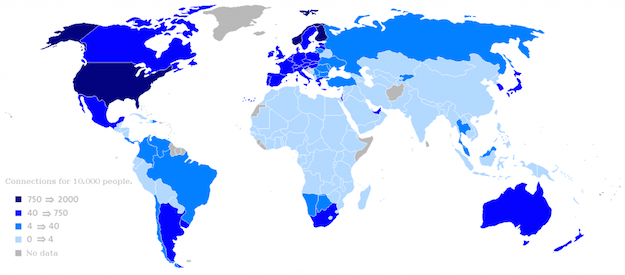
Figure 1: Internet access by country, based from the 2000 World Bank World Development Report and the Internet Software Consortium. (CedricBNL, 2006)
In his attempt to account for the widespread influence of networks on contemporary society, Manuel Castells (2009) brought together the insights of graph theory with those of ANT. My focus here is on Castells’s description of the operation of power within networks. Where graph theory and ANT deal broadly with networks as structures or concepts, Castells specifically connects his theory of networks to digital networks, framing that theory in terms how power is enacted with and through these networks.
Network* Power
Castells (2009) identified four kinds of power in networks, where “power” refers to “the relational capacity to impose an actor’s will over another actor’s will” by means of the “structural capacity of domination embedded in the institutions of society” (p. 44). These forms of power, which I collectively refer to as network* power, are networking power, network power, networked power, and network-making power (pp. 42–44).
Networking power describes the ability of those who participate in networks to leverage their power against those who do not. Controlling other individuals’ access to networks means that they can be prevented from participating in the gains—economic, cultural—related to network participation (Fig. 1). Network power governs coordination between networks, and is determined by the “standards” and protocols that govern the network (Castells, 2009, p. 43). In other words, network power describes the operation of power via structural properties of networks such as hubs or small worlds. Castells defined networked power as that associated with traditional power holders operating within networks, as determined by the “programmed goals” of those networks (p. 44). Networked power describes how prominent actors within networks, such as those that control significant hubs, can use the features of those networks to maintain or further that power. In this definition there is a danger, however, as analyses that focus on single power-holders, either individuals or groups, can seem “one-dimensiona[l]” or be an “analytical dead-end” if they ignore the role of networks themselves in creating and maintaining this power and simply attribute it to a “single entity” (p. 44).
Although Castells (2009) argued that these three forms of power are quite real, the “crucial” power he identified—the dominant form of power in a networked society—is network-making power, the power that governs the processes of creating and maintaining networks (p. 45). As with ANT, Castells argued that “networks process flows” and these flows are the “streams of information between nodes” in a network (p. 20). He suggested that power holders are not the “single-entit[ies]” (p. 44) of networked power, but rather the networks themselves, conceived not as disembodied things, but as actor-networks working within the constraints of the network’s program. Because network-making power is central to the formation of networks it influences the other forms of network power, as these forms of power are ultimately dependent on the characteristics of their underlying networks.
Programming and Switching
The network flows established by network-making power operate according to two mechanisms: programming and switching. In the first case, networks are governed by a particular program, where this program “assigns the network its goals and rules of performance” (Castells, 2009, p. 20). Castells used the term broadly, allowing it to refer to both computer programs—code for running machines—as well as cultural norms and procedures. Switching refers to the ability of networks to enter into cooperative relationships with other networks, allowing each to increase their power (pp. 20–21). Networked actors can serve as both programmers and switchers, establishing the goals for networks and creating relationships between networks.
